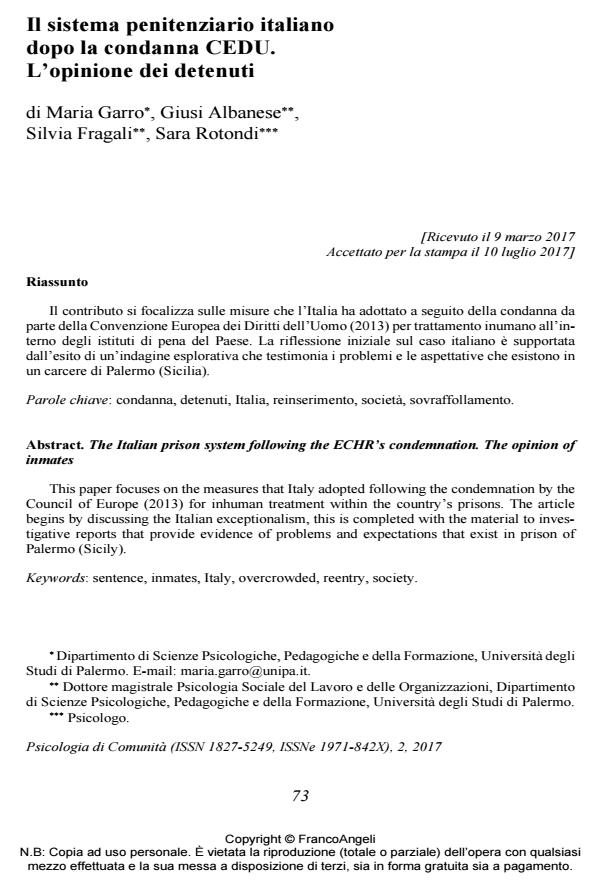Il sistema penitenziario italiano dopo la condanna CEDU. L’opinione dei detenuti
Titolo Rivista PSICOLOGIA DI COMUNITA’
Autori/Curatori Maria Garro, Giusi Albanese, Silvia Fragali, Sara Rotondi
Anno di pubblicazione 2017 Fascicolo 2017/2
Lingua Italiano Numero pagine 11 P. 73-83 Dimensione file 165 KB
DOI 10.3280/PSC2017-002008
Il DOI è il codice a barre della proprietà intellettuale: per saperne di più
clicca qui
Qui sotto puoi vedere in anteprima la prima pagina di questo articolo.
Se questo articolo ti interessa, lo puoi acquistare (e scaricare in formato pdf) seguendo le facili indicazioni per acquistare il download credit. Acquista Download Credits per scaricare questo Articolo in formato PDF

FrancoAngeli è membro della Publishers International Linking Association, Inc (PILA)associazione indipendente e non profit per facilitare (attraverso i servizi tecnologici implementati da CrossRef.org) l’accesso degli studiosi ai contenuti digitali nelle pubblicazioni professionali e scientifiche
Il contributo si focalizza sulle misure che l’Italia ha adottato a seguito della condanna da parte della Convenzione Europea dei Diritti dell’Uomo (2013) per trattamento inumano all’interno degli istituti di pena del Paese. La riflessione iniziale sul caso italiano è supportata dall’esito di un’indagine esplorativa che testimonia i problemi e le aspettative che esistono in un carcere di Palermo (Sicilia).
Parole chiave:Condanna, detenuti, Italia, reinserimento, società, sovraffollamento.
Maria Garro, Giusi Albanese, Silvia Fragali, Sara Rotondi, Il sistema penitenziario italiano dopo la condanna CEDU. L’opinione dei detenuti in "PSICOLOGIA DI COMUNITA’" 2/2017, pp 73-83, DOI: 10.3280/PSC2017-002008